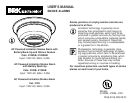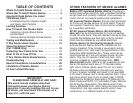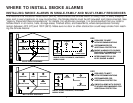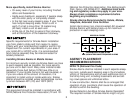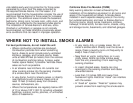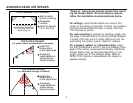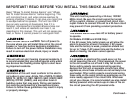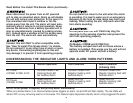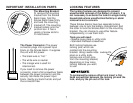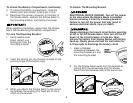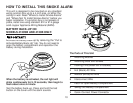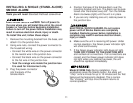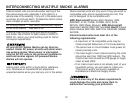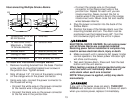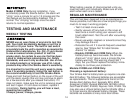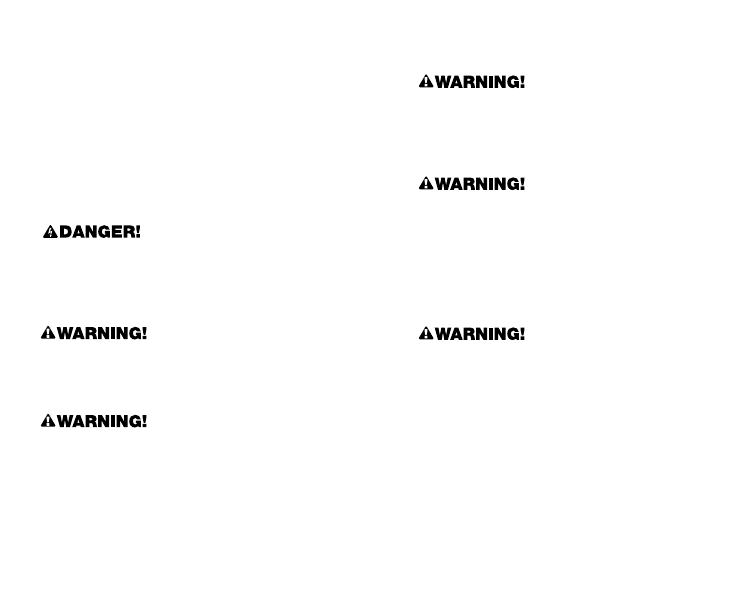
5
Read “Where To Install Smoke Alarms” and “Where
Not To Install Smoke Alarms” before beginning. This
unit monitors the air, and when smoke reaches its
sensing chamber, it alarms. It can give you more time
to escape before fire spreads. This unit can ONLY
give an early warning of developing fires if it is
installed, maintained and located where smoke can
reach it, and where all residents can hear it, as
described in this manual. This unit will not sense gas,
heat, or flame. It cannot prevent or extinguish fires.
ELECTRICAL SHOCK HAZARD. Turn off power to
the area where you will install this unit at the circuit
breaker or fuse box before beginning installation.
Failure to turn off the power before installation may
result in serious electrical shock, injury or death.
This unit will not alert hearing impaired residents. It
is recommended that you install special units which
use devices like flashing strobe lights to alert hear-
ing impaired residents.
Installation of this unit must conform to the electri-
cal codes in your area; Article 760 of NFPA 70 (NEC),
NFPA 72, NFPA 101; SBC (SBCCI); UBC (ICBO); NBC
(BOCA); OTFDC (CABO), and any other local or
building codes that may apply. Wiring and installa-
tion must be performed by a licensed electrician.
Failure to follow these guidelines may result in injury
or property damage.
This unit must be powered by a 24-hour, 120VAC
60Hz circuit. Be sure the circuit cannot be turned
off by a switch, dimmer, or ground fault circuit inter-
rupter. Failure to connect this unit to a 24-hour circuit
may prevent it from providing constant protection.
This Smoke Alarm must have AC or battery power
to operate.
On Models 4120SB and 4120B Only:
If the AC power fails, battery back-up will allow the
alarm to sound for at least 4 minutes. If AC power
fails and the battery is weak, protection should last
for up to 7 days. If AC power fails and the battery is
dead or missing, the alarm cannot operate.
It is possible an electrical fire could occur on the
circuit powering this unit. If this happened, the power
to the unit could be cut off and it may fail to alarm.
Some safety experts recommend wiring warning
devices like this unit on separate circuits from other
appliances, since these circuits are not as likely to be
overloaded. Other safety experts recommend wiring
these units on the same circuits as appliances so it is
more readily apparent if the circuit fails. Whichever
circuit you choose, it is recommended you also install
battery powered units as back-ups in case of fire on
the circuit powering the AC powered units.
IMPORTANT! READ BEFORE YOU INSTALL THIS SMOKE ALARM
Continued...



